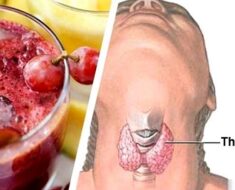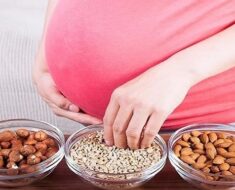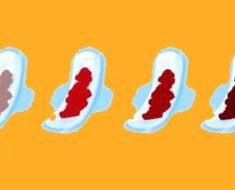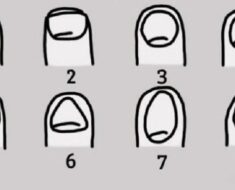
The ketogenic diet, aka keto diet, is one that focuses on high fat, moderate protein, and low carbohydrate intake. Comparing this to a traditional diet, you’re reducing your carbohydrates and replacing them with fat.
When you do this, your body is forced to burn fat instead of carbohydrates. This means you’re changing the way your body uses energy.
Instead of supplementing 45-65% of your daily calories with carbohydrates, you’re now only consuming 5% from carbohydrates so you can eat 70% from fats.
This reduction of carbohydrates causes your glycogen stores to become empty, forcing your body to instead turn to fat as its main energy source. During this process, your liver creates ketones, which eventually allows your body to fall into a metabolic state of ketosis.
In order to properly understand the difference between the keto diet and traditional diets, it’s important to understand how the body converts macronutrients into energy.
Carbohydrates vs Fat For Fuel
The keto diet is centered around the idea that your body was designed to run more efficiently burning fat as opposed to sugar (glucose from carbohydrates).
As mentioned above, the keto diet drastically reduces your carbohydrate intake and heavily increases fat intake in order to produce ketones and put your body in a state of ketosis. But why?
Let’s take a look at how the body normally runs off of carbohydrates and the difference fat makes as an energy source.
Carbohydrates for Energy
Naturally, glucose is the body’s primary energy source. So if you have sufficient amounts of glucose, your body will choose it over other sources to get the energy it needs.
When you eat a diet rich in carbohydrates, your body breaks them down into glucose for energy. From here, the body produces insulin to help transport the glucose to your bloodstream. This is why carbohydrates are an important energy source.
Unfortunately, your liver can only store so much excess glucose (known as glycogen once stored in the liver) and once it’s full, the rest gets stored as fat.
Once your glycogen stores are empty, you start to feel hungry again so your first instinct is to reach for a snack to fulfil your hunger. However, when you do this, the stored fat you already have doesn’t get burned for energy.
Over time, continuous overabundances of glucose mean increased fat storage, which means you’re left with an overwhelming amount of fat that you really don’t want.
One option to get rid of this excess fat is to exercise and eat in a caloric deficit, meaning consume less calories than you expend in a day.
The other option, which has been shown to provide tremendous results in a relatively short amount of time, is to replace sugar with fat as your body’s main source of energy.
Fat for Energy
In a low-carb diet like the ketogenic diet, your body is forced to turn to fat for fuel. In this instance, your liver breaks down fat into fatty acids and glycerol through a process called beta-oxidation.
From here, those fatty acids are broken down into ketones through a process called ketogenesis. These ketones are then used for energy and with enough ketones in your bloodstream, you can reach ketosis.
Ketosis is a normal metabolic state that occurs when you consume too few carbohydrates. When there aren’t enough carbohydrates for your body to use for energy, it turns to fat instead. During this process, your liver creates ketones.
Ketones are an energy-rich substance that is left over when your body breaks down fat for energy, as opposed to carbohydrates.
When ketone levels in the blood increase to a certain point, you reach a state of ketosis.
Normally the body’s main source of energy comes from carbs and glucose. However, with the keto diet, these ketones are instead used to provide your body with energy.
This can only work, though, when you drastically lower your carb intake and focus on fat consumption.
The goal of the ketogenic diet is to force the body into ketosis to burn fat by starving it of carbohydrates. Your body becomes more efficient at burning fat when it’s the main energy source. Once your body reaches a state of ketosis, your body will even start to burn body fat! This is why it’s such a popular diet for weight loss.
So on the keto diet, your body basically turns into a fat-burning machine.
Benefits of a Keto Diet
The ketogenic diet offers an abundance of health benefits ranging from aiding in weight loss to increased energy and more.
So whether you’re looking to lose weight or better control your blood sugar, the keto diet has you covered.
Aids in Weight Loss
One of the most common reasons people turn to a keto diet is due to its magical weight loss powers. Okay, it’s not magical, there’s actually science backing it.
When following a keto diet, your body starts burning fat instead of sugar for energy, whether it’s body fat from excess glucose or from the foods you eat. Due to low carbohydrate intake, insulin levels in your body decrease significantly, meaning your body can’t store as much fat.
So you can’t store as much fat AND you’re burning fat for energy. Coupled together, these drastically increase weight loss.
Controls Cholesterol & Blood Pressure
The ketogenic diet has been proven to increase heart-healthy HDL (high-density lipoprotein) cholesterol, more-so than low-fat, high-carb diets. It also decreases the amount of harmful VLDL (very low-density lipoprotein) cholesterol in your blood.
This means a keto diet can improve cholesterol and triglyceride levels that are commonly associated with buildup in the arteries.
In addition, low-carb diets are associated with improved blood pressure. One of the reasons for this is due to a decrease in weight, as overweight people tend to have more blood pressure issues.
Helps Control Blood Sugar & Insulin Resistance
Traditional diets rely on carbohydrates to produce glucose and insulin to fuel the body. However, people suffering with diabetes have difficulty producing insulin to transport the glucose to cells.
With diets like the keto diet, glucose is sparse, as is insulin, since the main fuel source is fat. Due to this, blood sugar levels are lower, making it considerably easier to manage and prevent diabetes.
Many people have experienced positive results in regards to managing their blood sugar levels by following a keto diet.
Increases Energy & Normalizes Hunger
With normal diets that produce glucose as a means of energy, your glycogen stores can only hold so much. Once they’re empty, you’re also left feeling empty and hungry for more. Let’s not forget to mention the spike in blood sugar levels caused by glucose that result in a big ol’ sugar crash.
Thanks to low-carb diets, you’re instead burning fat for energy and not relying on a small reserve to hold you over. This energy source, fat, is more reliable than sugar and keeps you feeling energized and full for longer.
Increases Mental Focus
Ketones are a wonderful fuel source for your brain. A lower carbohydrate intake and decrease in blood sugar levels, especially high spikes, make for a more focused and concentrated mind.
In fact, many people take up a keto diet just for the increased focus.
Reduces Acne
If you’re looking for one more reason to love the keto diet, this is it.
Studies have shown a link between low-carb diets like the keto diet and a reduction in acne. In particular, people have seen a decrease in lesions and skim inflammation.
A big contributor to this decrease in acne is due to a more controlled diet and less blood sugar spikes from carbohydrates.
Treats Epilepsy
The keto diet has been used since the 1920s to help treat epilepsy in children. In fact, the ketogenic diet was created for this specific reason, as medications don’t always work.
By replacing glucose with ketones for energy, certain chemicals are produced that help prevent seizures. As a result, less medications need to be taken.
WHAT CAN I EAT ON A KETO DIET?

The keto diet is unlike any diet you’ve (probably) ever tried before.
Eating low-carb and high-fat foods means a stricter variety of fruits and vegetables but an increase in fatty foods.
To get a better understanding of the types of foods you can actually eat on a keto diet, peep the list below.
Foods to eat:
- Above ground vegetables – avocado, broccoli, cauliflower, zucchini, etc.
- Berries (low glycemic impact) – blackberries, raspberries, etc.
- Dairy (high in fat) – butter, hard cheeses, high fat cream, etc.
- Leafy greens – arugula, kale, spinach, etc.
- Meat – beef, eggs, fish, poultry, etc.
- Nuts and seeds – macadamias, walnuts, sunflower seeds, etc,
- Other fats – coconut oil, high-fat salad dressing, peanut butter, olive oil, other nut butters, saturated fats, etc.
- Sweeteners – monk fruit, stevia, etc.
The majority of the foods listed above seem relatively healthy. You got your avocados, berries, spinach, nuts. But there’s also some items on the list that make you do a double take.
I mean, what kind of diet encourages you to eat butter, cheese, and high-fat salad dressings?!
The keto diet, that’s who. And it has been proven to help you lose weight and all those other great benefits listed above.
It’s important to understand that the fats you’re replacing carbs with are healthy fats. More information on the difference between good and bad fats can be found here.
Now you’re probably wondering what foods to avoid. The answer, my dear friend, may just shock you.
Foods to avoid:
- Fruit – apples, bananas, etc.
- Grains – cereal, corn, rice, wheat, etc.
- Sugar – agave, honey, maple syrup, etc.
- Tubers – potatoes, yams, etc.
THESE are the foods you’ve been told your whole life to eat! Not cheese and butter and who knows what other fat-induced foods. But when you go keto, these are the things to avoid at all costs.
Simply put, it’s because these are strictly carbs, and carbs are bad on the keto diet.
Now let’s break the keto diet down further into its specific macronutrients so you have an idea of what ratios to consume.
Keto Macronutrients
Macronutrients, or macros, consist of carbohydrates, fat, and protein that the body requires in large quantities.
As mentioned above, the keto diet is high in fat, moderate in protein, and low in carbs. This breaks your daily caloric intake down to 70% fat, 25% protein, and 5% carbohydrate.
Typically, this 5% daily carbohydrate intake is 35g, with 20-30 grams being net carbs. Net carbs are the total number of dietary carbohydrates minus dietary fiber. This is because your body cannot digest fiber, meaning it does not get converted into glucose.
However, the closer to, and even lower than 20g net carb, is ideal for reaching ketosis.
So keeping your carbohydrate intake, and therefore glucose levels, as low as possible will provide better results with the keto diet overall.
Daily Caloric Intake
How many calories you consume in a day is dependent upon your lifestyle. You should calculate your caloric intake based on the following:
- 12-14 calories per pound if you’re healthy and lead a fairly inactive lifestyle.
- 14-16 calories per pound if you exercise moderately a few times (3-5) per week and have an active lifestyle.
- 16-18 calories per pound if you have a physically demanding job and exercise heartily.
- 18.5-22 calories per pound if you partake in intense training (15+ hours a week).
- 22+ calories per pound if you are involved in extreme training (20+ hours a week).
Tracking your macros and daily caloric intake is up to you, but when first starting on a new diet, especially keto, it’s wise to track what you’re eating. It’s important you’re consuming the right ratios of fat, protein, and carbs, especially if you want to reach ketosis quickly.
A super simple way to track your eating is using the MyFitnessPal App. It has a free and paid option, both being good in their own ways.
Veggies on a Keto Diet
As noted earlier, there are certain vegetables to avoid and others that are good to consume. Since vegetables are complex carbohydrates, there is where your main limited allowance of carbs will be coming from.
In order to stay within that 20-30 grams of net carb range, it’s important to know exactly how many net carbs certain vegetables pack.
When searching for vegetables to eat on the keto diet, you want to choose them of the dark green and/or leafy variety.
Here’s a breakdown of several keto-friendly vegetables and their net carbs:

Example Recipes
Figuring out meals to eat when you’re just starting the keto diet can be tricky. You want most of your meals to consist of protein with vegetables and an extra side of fat.
One dinner option would be a steak topped with butter and a side of collard greens cooked in olive oil or bacon fat.
GETTING STARTED WITH KETO
You can get started with keto in two different ways: either by yourself or with the help of others.
If you want to figure it out on your own, these are the steps you should follow:
- Calculate your macros based on health goals (lose weight, gain weight, etc.)
- Understand meal planning so you stick to your macro goals
- Drink enough water (at least 64oz daily)
- Make sure you’re getting enough sleep
Again, it’s extremely important to limit your carbohydrate intake to 20 grams a day, with the max being 30 grams. These carbs should also be coming from vegetables, not sugar-laden foods like cookies.
It’s also crucial you drink enough water. The Mayo Clinic recommends 91-125 ounces of daily water intake, but says the 8×8 rule (64oz) is still fair. Either way, you should be drinking at least 64oz of water daily, but the more the merrier.
And as far as meal planning goes, you should definitely do it. It will make your life easier and help you stay on track, not only for your macro goals, but also for reaching ketosis.
To help get you started, I highly recommend the Keto Dash program.
HOW TO REACH KETOSIS
Sadly, you can’t reach ketosis overnight. This is something that takes time and dedication to follow the “rules.”
However, once you’re in ketosis, you’ll feel relieved and like you’re finally getting the hang of keto.
So how do you actually reach ketosis? First things first.
- Restrict carbohydrates: It’s crucial you understand that reaching ketosis is done through starvation of carbohydrates, not through starvation of calories. Your body can’t go into ketosis while glucose is still in supply, so you need to keep carbohydrates at 20g (to 30g) or less each day.
- Watch protein consumption: Keeping your protein consumption at 25% of your daily caloric intake is crucial. Otherwise, consuming too much protein can result in it being converted into glucose, which will prevent ketosis from occurring.
- Fat is good: There is a common stigma about fatty foods being bad, and while this is true for certain fats, the keto diet focuses on the consumption of healthy fats. Great examples of these are avocados, olive oil, nuts, and whole eggs.
- Drink up: With the traditional diets, carbohydrates are stored with water, which can be used throughout the day when the body needs it. However, since the keto diet doesn’t want built-up carbohydrates, there isn’t excess water stored for use later on. This means dehydration is a very common problem with keto, so it’s important to drink plenty of water throughout the day. Try out the Hydro Flask – you’re guaranteed refreshingly ice-cold water all day (which is amaazzinggg if I do say so myself).
- Consider intermittent fasting: This is when you block off an 8-hour window of your day and only eat during that time frame. The rest of the day you don’t consume anything.
- Incorporate exercise: Adding in exercise helps deplete glycogen stores quicker, as your body needs energy to do so. Once these stores are empty, your body will turn to fat for energy, which helps you enter ketosis.
- Try supplements: There are supplements, known as exogenous ketones, that can be taken to speed up ketosis. Consuming these helps communicate to your body that it should now be using ketones, as opposed to glucose, as its main energy source.
How to Tell if You’re in a State of Ketosis
Once you’re in ketosis, losing weight happens fairly quickly, since your body is now running on fat.
There are two common ways to monitor ketone levels.
The first is through urine test strips. These tell you the amount of ketones your body is expelling.
The second option, which is a little more expensive, is a blood glucose monitor that also happens to test ketones. With this, you do have to prick your finger, but it gives an accurate reading of ketones in your blood. However, the blood strips are a little pricey if you run out and need more, but it’s reassuring knowing your ketone levels.
Aside from these tests, there are certain changes you’ll be able to notice once you’re in ketosis.
- Bad breath: Your body produces the ketone acetone and it has to go somewhere, so it gets partially excreted through your breath. This is a short term problem, but stinky nonetheless.
- Dry mouth: Whether it be from sweat or urination, the more your body releases these fluids, the greater the chance of dry mouth. This happens due to an electrolyte shortage, since you’re losing them to sweat and excessive urination. An easy way to ensure you’re consuming enough electrolytes is by adding water enhancers like MiO to your drinks (0 calories, 0g sugar, so it’s good). Don’t drink Gatorade or other power drinks with electrolytes if they contain sugar and empty calories (which they most likely do).
- Increased urination: Keto naturally causes frequent urination due to a ketone body called acetoacetate, and paired with the increased water consumption, increased urination is a given.
- Reduced hunger & increased energy: The easiest to tell (and probably best) signs that you’re in ketosis are increased energy and not feeling hungry as often as before.
TYPES OF KETOGENIC DIETS
While most diets consist of one version, the ketogenic diet consists of several. The distinguishing factor of each is the amount of carb intake.
- Standard Ketogenic Diet (SKD): The SKD is the most common of the 4 which focuses on 20-30 grams net carbs daily with high fat and moderate protein intake.
- Cyclical Ketogenic Diet (CKD): With the CKD, you stick to a low-carb ketogenic diet for several days and then switch to eating a high-carb, ketogenic diet for a few days.
- Targeted Ketogenic Diet (TKD): The TKD involves eating 25-50 grams of net carbs (or less) about 30 minutes to an hour before you exercise.
- High-Protein Ketogenic Diet: This version of the keto diet is similar to SKD, but with more protein intake. This is ideal for bodybuilding or anyone looking to gain muscle.
The good thing is, if you’re someone who trains and wants to build muscle, it is still possible to do so while going keto. Generally, this is done so by loading up with carbs to fuel your workout. However on keto, those carbs have to be eaten at specific times in order to maximize benefits of the diet.
Since muscle building requires 1.0 -1.2g of protein per lean pound of body mass, the high-protein keto diet will probably fit muscle building needs best.
Nonetheless, choosing a keto diet is based on your goals and what you feel comfortable doing.
HEALTH RISKS OF A KETO DIET
As with any diet, the keto diet does have some dangers associated with it.
One that isn’t very common is the build up of ketones, but it is possible. When ketones build up, ketosis can become dangerous, causing your body to enter ketoacidosis. Too many ketones can cause dehydration and even lead to a change in the chemical balance of your blood.
However, ketoacidosis isn’t very common, as getting ketone levels high enough for it to occur is extremely difficult.
With that being said, there are some common side effects associated with the keto diet.
Common Side Effects of a Keto Diet

Aside from ketoacidosis, the keto diet has a few common side effects that occur at the beginning of the transition from glucose to ketones for energy.
It’s important to note not that not everyone will experience side effects from the ketogenic diet. Those unlucky ones that do, however, should be happy to know they are temporary and usually go away fairly quickly.
Constipation
Unfortunately, constipation is a very common side effect when starting the keto diet.
Factors that lead to this are:
- Dehydration
- Low sodium
- Too much dairy or nuts
- Magnesium imbalance
If this is the case, you should cut back on dairy and nuts, drink plenty of water, and make sure you’re consuming enough salt and magnesium (see dizziness & drowsiness below).
Diarrhea
Limiting your carbs and fats while eating too much protein can cause diarrhea, as well as just changing your routine. Your body isn’t used to these new macro ratios so it might need a little time to adjust.
To avoid this problem, make sure you’re replacing your lost carbs with more fat, preferably saturated fats such as butter or coconut oil.
Dizziness & Drowsiness
Due to the lack of carbohydrates and therefore water retention, the body loses water very quickly, causing dehydration. Along with it goes vital minerals like sodium, potassium, and magnesium.
As a result, you may feel dizzy, fatigued, lightheaded, or tired, with dizziness and fatigue being the most common. Other possible side effects are muscle cramps, headaches, and itchy skin.
To combat these symptoms, or avoid them altogether (for the most part), you should constantly be consuming these vital minerals. An easy way to do this is adding a little salt to your foods or eating foods high in salt, as well as potassium rich foods (avocados, dairy, green leafy vegetables).
Keto Flu
Since this is a complete change to your lifestyle, many people starting the keto diet experience flu-like symptoms, known as the keto flu.
Your body has been used to running on carbohydrates and glucose your whole life, so this sudden change confuses your body.
Common keto flu symptoms include:
- Brain fog or confusion
- Headaches
- Lack of motivation
- Lethargy
- Irritability
Luckily, these symptoms usually go away within a few days. However, this can be avoided entirely by staying very hydrated, using electrolytes, increasing your sodium intake, and eating enough fat.
Heart Palpitations
During the first few weeks of transitioning to a keto diet, you may experience a slight increase in your heart rate. As with many of these side effects, it’s often due to insufficient water and sodium intake, which causes a reduction in the fluid circulating in your blood.
Not everyone experiences heart palpitations, and it most likely occurs in people with a normally low blood pressure. Nonetheless, if this does occur, don’t forget to drink your water and make sure your foods contain some sodium!
Muscular Cramps
Quite similar to the other side effects, the loss of minerals when first starting keto can cause muscular cramps. It’s most common in the legs, but it can happen anywhere. Again, make sure to drink plenty of water and add sodium to your meals!
Poor Physical Performance
Since your body is used to running on carbs and glucose, and you’re now restricting them, your body is going to feel weak.
Once your body learns to instead use fat for energy, your performance will show itself again and all will be well. And you’ll kick some major a**.
Is Keto Right for You?
Starting a new diet can be difficult, but since the keto diet is sustainable and still allows you to eat delicious foods, it makes it a little easier.
If you’re ready to lose weight, experience improved focus, and lead an overall healthy lifestyle, what’s stopping you?
The Keto Dash program can guide you during your transition and provide you with endless amounts of support to help you reach your weight loss goals.





